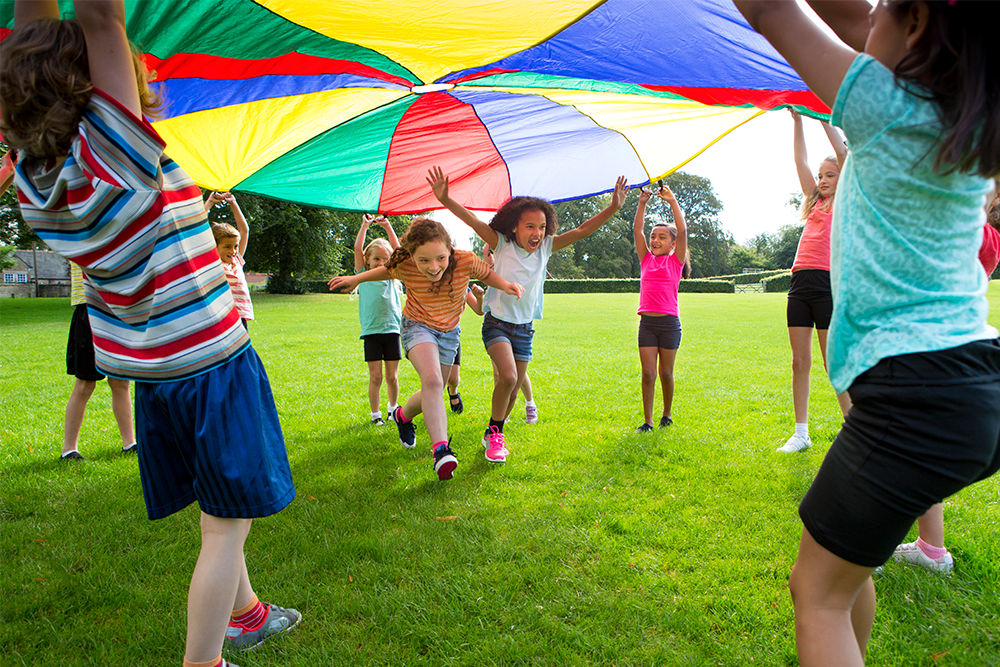The Effect Of HIIT On Children’s Motor Skills

Catherine O’Brien
In my last article, I introduced a study that utilized interval training (FUNtervals) in the classroom (Ma, Mare, & Gurd, 2015). The research demonstrated that engaging in FUNtervals had the potential to improve selective memory in children. Understanding that attention is the basis for deeper cognitive function (learning, memory etc.), I was interested in looking into research examining how intervals may affect other cognitive processes.
Research done by Lundbye-Jensen, Skriver, Nielsen, and Roig (2017) investigated the effects of acute exercise on motor memory in 3rd and 4th-grade students. The aim of the study was to identify whether an acute bout of exercise following a motor skill task in the classroom could improve retention of motor memory. Previous research has demonstrated a positive relationship between motor skill function and academic achievement and between daily physical education and improved motor skill performance. As previously discussed, interval training has been shown to produce many of the same beneficial cognitive effects as extended aerobic exercise. Given the previous research in the space, the present researchers designed a study to measure the effects of two types of high-intensity training on motor memory in children.
Participants were 78 diverse children in 3rd or 4th grade. Participants were randomly assigned to one of three conditions- running (RUN), floorball (FLB) or control (CON). In order to help control for differences between the groups, each of the three groups were matched on gender, age, BMI, and fitness level. Throughout the experiment, subjects participated in 4 separate sessions.
4 Sessions:
- Session 1: pre-examination session including aerobic fitness testing (measuring VO2max)
- Session 2: Subjects practiced the motor memory task
- Session 3: Participants engaged in running (RUN), floorball (FLB) or nothing (CON) based on his or her assigned condition for 20 minutes. This session took place immediately after the practice motor task session. *
- Session 4: Retention tests were run 1-hour, 24-hours and 7-days post initial practice of motor task.
*All subjects rested for 40 minutes upon completion of the intervention (RUN, FLB, CON).
The motor memory task was designed using customized software. Participants were seated in front of a computer screen and asked to control the cursor with his or her dominant hand. The cursor moved vertically and horizontally. After one minute of familiarization with the feel of the cursor and the associated movement of the arrow on the screen, the acquisition task initiated. In this task, subjects were instructed to match the cursor as accurately as possible to the preset target. All targets required that the subjects move the cursor both vertically and horizontally.
Related Article: Quick Facts For A Healthier You
Motor performance was measured based on the root mean square error (RMSE) between the preset target and the subjects’ trace. Between each of the 8 targets presented, the cursor was positioned at “target mean” in the middle of the screen. In this way, subjects always started and ended at the same central location. “Their score was defined as the mean of absolute vertical errors between the cursor and target in relation to target mean. If the error exceeded two times the distance from target to target mean, the score for this data point was set to zero.” (p.183).
Three Rounds:
Each subject completed blocks of 24 trials including three rounds of the eight different targets. Each trial was followed by a pause in which the subject received feedback regarding:
- Knowledge of result – i.e. their score from 0-100
- knowledge of performance- which included a picture that showed the subjects’ trace and the target and
- Average scores so children understood how his or her scores compared to the average performance.
In the FLB condition, students played a game of floorball. The structure of the game was as follows, 2-minute instructions, 3-minute low intensity warm up followed by 3-minute high-intensity play and then 2-minutes of low-intensity play. They continued to switch between 3-minute high-intensity play and 2-minute low-intensity play for the duration of the game.
Related Article: The Truth About Cold Therapy And Recovery
The children in the RUN condition participated in a similar protocol including instructions and warm up and alternating 3-minute high intensity running with 2-minute low intensity running. In both the FLB and RUN conditions, subjects completed 9 total minutes of high-intensity activity. Subjects in the CON condition were instructed to sit comfortably and had the opportunity to watch cartoons. Subjects HR was monitored using a Polar tea 2 system heart monitor.
After completing their designated intervention, participants all rested for 40-minutes. They then completed another motor memory task 1-hour, 24-hours, and 7-days post intervention. The purpose of measuring performance at multiple points in time was to understand when the motor memory associated with the task was consolidated.
Motor Skills:
Baseline analyses revealed no significant difference between subjects’ motor skills prior to intervention suggesting that all students had comparable performance on the initial motor memory test. Results revealed that engaging in an acute bout of exercise did indeed improve long term motor memory. Interestingly, the positive effects were only present in the delayed testing that occurred 7-days post intervention (See Figure). Subjects in the RUN and the FLB groups both demonstrated improvements suggesting that the type of high-intensity training did not affect the outcome.
Previous research has demonstrated that high-intensity exercise may diminish performance on memory tasks when the tasks are performed immediately or soon after the exercise intervention. There could be various reasons, for example, subjects may be overly aroused upon completing the exercise bout and thus unable to focus. The researchers of the present study posit that the increased performance 7-days post intervention may be attributed to a longer memory consolidation process.
Related Article: Kids Need To Move To Improve
If you are like me, you may be thinking, is it possible that the motor memory improved due to practice? That is, subjects experienced the motor memory task pre intervention, 1-hour post, 24-hours post and 7-days post. This is where the control group comes in. Because the control group did not experience the same improvements at 7-days post compared to those in the RUN and FLB groups, we can infer that the improvements were not due to practice effects and were caused by the high-intensity intervention.
Take Aways:
So what do these findings mean? The present research successfully builds upon previous work demonstrating the powerful cognitive benefits associated with high-intensity interval training. As discussed in my previous article on a protocol using FUNtervals, high-intensity training had positive effects on selective attention in school age children. Given that attention is the foundation for learning and memory, it is exciting to see this concept applied to a deeper cognitive process (attention vs. memory). From my point of view, the key takeaway is that intervals have the potential to improve selective attention and memory in children. The effects on memory, according to the present study, are more long term and less immediate, however. As such, employing a steady regimen involving interval training could perhaps improve academic performance related to motor memory over time.
(adsbygoogle = window.adsbygoogle || []).push({});
You Might Like:
RFK’s Plan to Make America Healthy Again: A Vision for a Healthier Future
Robert F. Kennedy Jr. (RFK Jr.), a prominent environmental lawyer and political activist, has emerged as a voice for change in the United States. Known for his work on environmental and public health issues, particularly...The Science of Temperature Therapy
Temperature therapy (also known as “thermal therapy” or “thermotherapy”) involves the use of heat or cold to improve health and function. Interestingly, thermotherapy has been around for centuries, with ancient cultures regularly using hot springs,...The Predictors of Longevity You Need to Care About
Living a long and healthy life is a universal aspiration, and with the publication of Peter Aittia’s new book “Outlive”, it has never been a bigger focus. With this has come the realisation that, while...How Overtraining and Undertraining Impacts Hormonal Health
While maintaining a healthy hormonal balance is essential for overall health and wellbeing, it is an often-overlooked component of women’s health. Hormones play a vital role in regulating various bodily functions, including metabolism, energy, mood,...12 days of Fitness: 12 Holiday workouts to crush this Christmas
The holiday period is a time for friends, food, and family. With this in mind, it should be a time of guilt-free fun. However, that doesn’t mean you have to neglect your fitness entirely over...Upper Body Strength in Post-Menopausal Women
Menopause is a unique time in the human life, and with it comes a myriad of changes that can have wide reaching health implications. However, over the last 20 years we have seen a strong...References:
Lundbye-Jensen, J., Skriver, K., Nielsen, JB., and Roig, M. (2017). Acute exercise improves motor memory consolidation in preadolescent children. Frontiers in Human Neuroscience, 11:182.
Ma, J.K., Mare, L.L., Gurd, B.J. (2015). Four minutes of in-class high-intensity interval activity improves selective attention in 9- to 11-year olds. Applied Physiology, Nutrition, and Metabolism, 40: 238-244.
(adsbygoogle = window.adsbygoogle || []).push({});

















